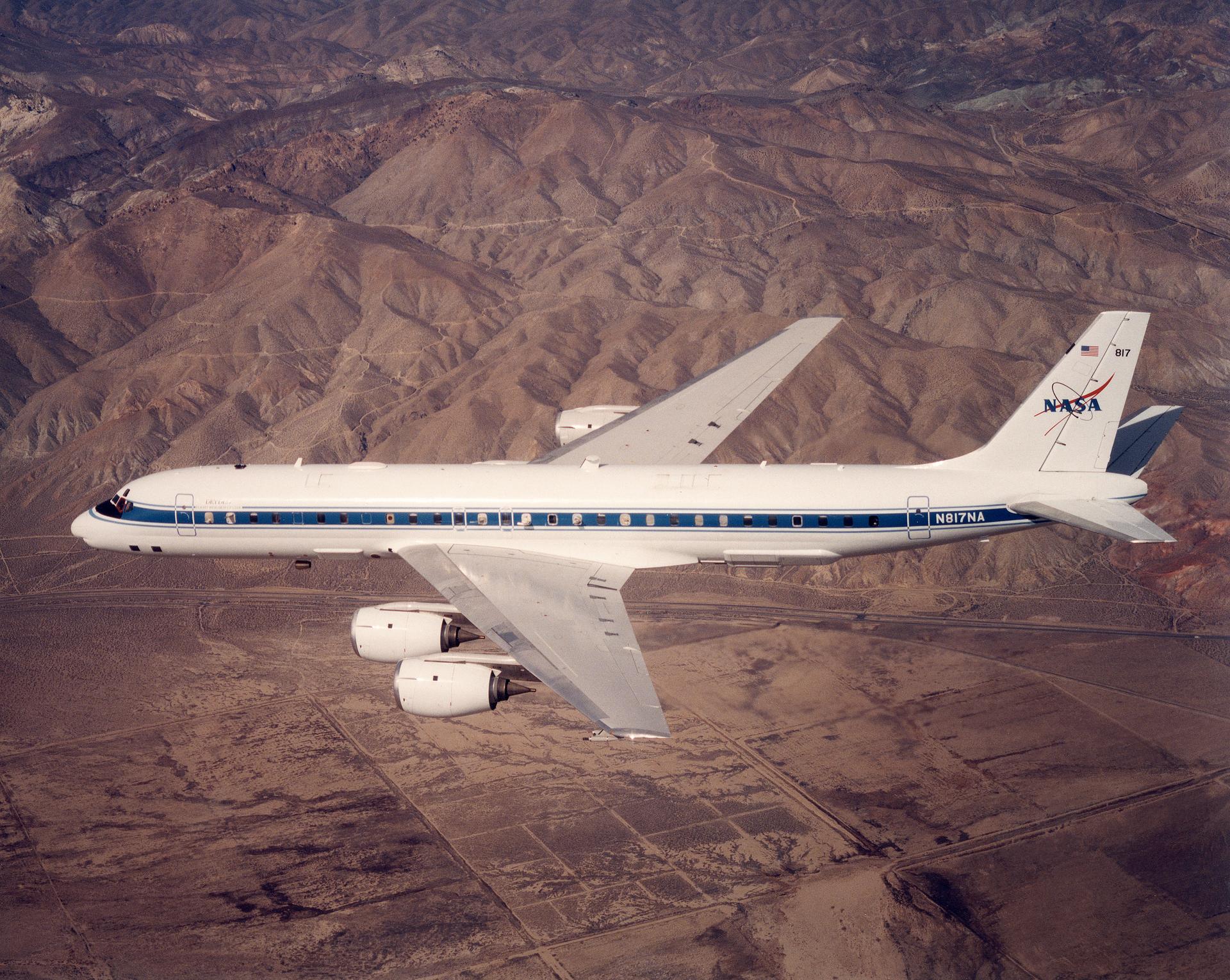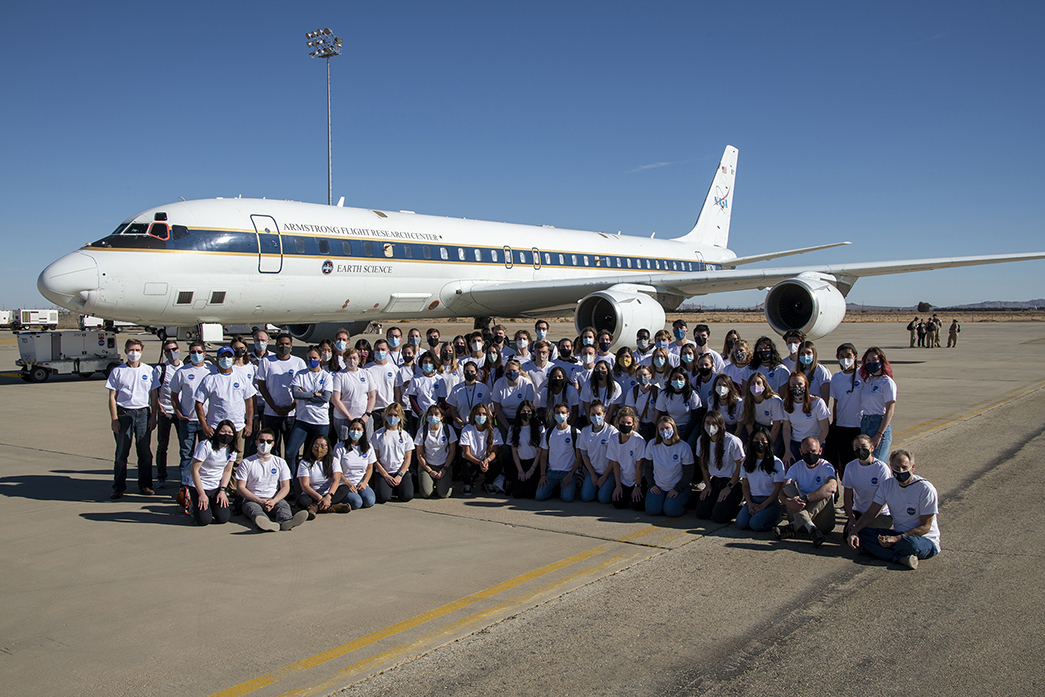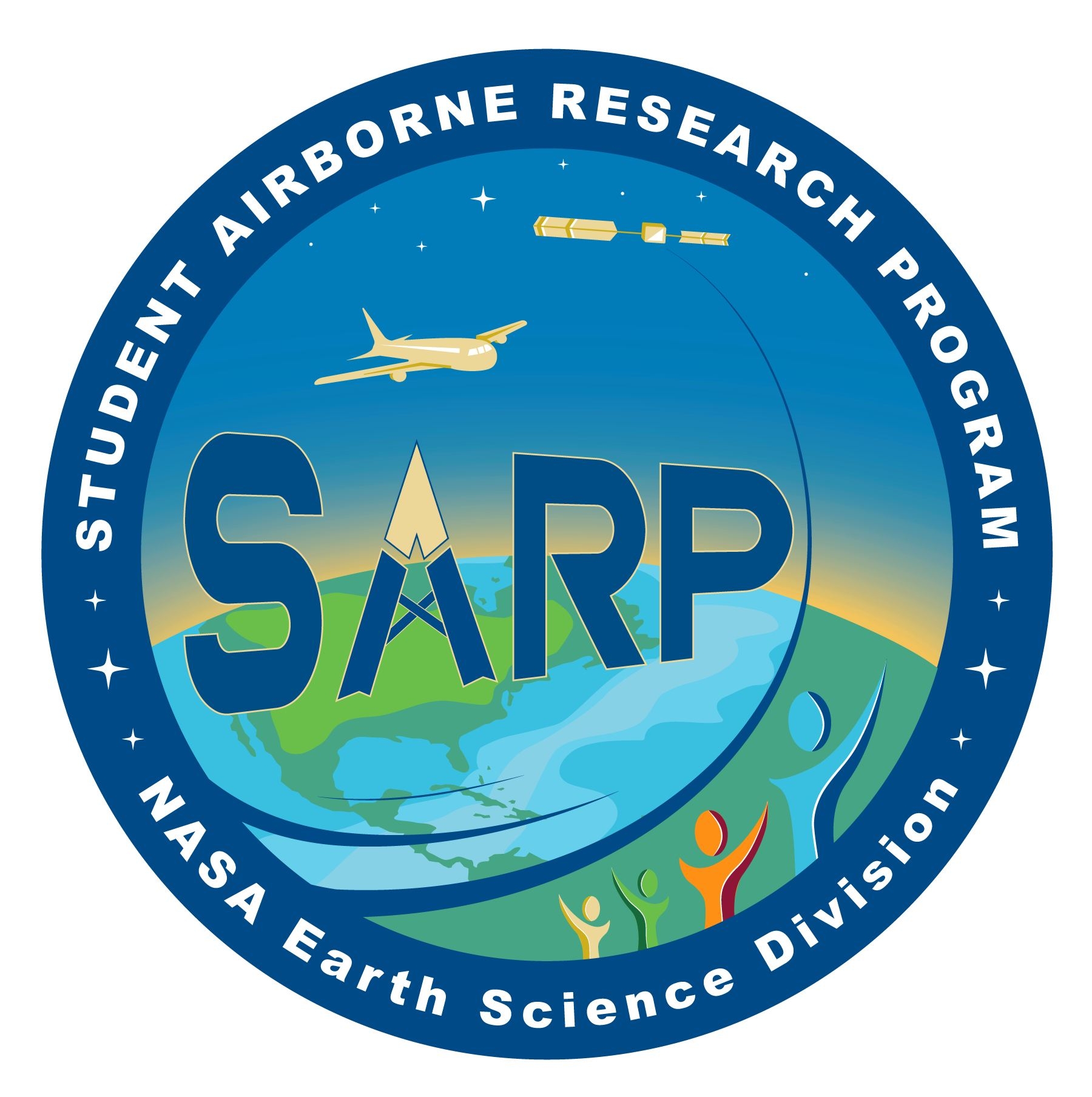UPDATE: This workshop has passed and proposals for papers are no longer requested.
Date: October 24–25, 2024
Location: Washington, D.C.
Jointly organized by the NASA History Office and the Earth Science Division, this workshop seeks to document the important contributions of airborne campaigns implemented on NASA’s DC-8 Airborne Science Laboratory. The workshop will be a combination of keynote talks, panel discussions, and roundtables. The intention is to publish an anthology of selected papers of key presentations.
NASA’s DC-8 aircraft recently completed nearly four decades of service to NASA with its retirement in early 2024 following the completion of the ASIA-AQ campaign. The DC-8, which NASA acquired in 1985, was a workhorse aircraft for NASA’s Airborne Science Program of NASA’s Earth Science Division (ESD), serving as the primary platform—or one of several platforms—of many airborne campaigns. Its contributions are legendary from flying as part of the first polar stratospheric ozone campaigns in the late 1980s, through campaigns focused on ice sheets, sea ice, terrestrial ecology, greenhouse gases, and air quality that continued throughout its lifetime.
Besides the process knowledge that the DC-8 provided, it served as an important proving ground for new instrumentation and techniques that helped pave the way for their eventual use in ESD’s space flight program, a source of calibration/validation data for ESD’s satellite instruments, and as a flying laboratory for students, post-docs and early career professionals to design, build, and test instruments, acquire data, and analyze it. It also was the primary platform for NASA’s now 15-year-old Student Airborne Research Program (SARP), which has provided hands-on opportunities for well over 400 young scientists and has an outstanding “STEM retention rate” for its past participants.
In this workshop, the ESD and related investigator communities are invited to share examples of the scientific, programmatic, and human achievement of the DC-8 over its nearly four decades of service to NASA. Besides descriptions of the science accomplished, workshop planners invite discussion of “lessons learned” about operation of a large airborne research laboratory that can be used as NASA moves ahead with furnishing and outfitting the DC-8’s successor, a B-777 that NASA acquired in 2023 in response to a strong recommendation from a 2021 report by the National Academies of Science, Engineering, and Medicine that ESD needed to have such a platform following the retirement of the DC-8 (Airborne Platforms to Advance NASA Earth System Science Priorities: Assessing the Future Need for a Large Aircraft ).
Workshop planners are seeking proposals for papers from ESD, related investigator communities—including academia, interagency and international partners, and private sector/non-profit entities—that detail scientific and programmatic results, lessons learned, and personal examples of how the DC-8 advanced science, informed decisions, and provided training opportunities for several generations of NASA.
If you wish to present a paper or have questions, please send an abstract of no more than 250 words and a short biography or curriculum vitae, including affiliation by April 15, 2024 to Dr. Brian C. Odom.


































